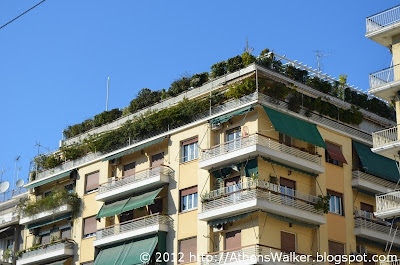Athens, besides the major ancient sights and monuments that make up its "touristy side" often seems to be a "secret city" for the visitor and many of its inhabitants alike. It's taken me quite some time to only recently start to uncover and decipher its little secrets, corners and interesting historical snippets that are not evident at first sight and nobody often has a clue about, until you stumble upon some interesting article or book excerpt.
I've written about a couple such instances in my previous post on Alexandras Avenue, but I left the best for last. I am generally not a history buff, so I don't care much about historical facts and dates unless something clicks to me, for whatever reason that may be. One such "click" came a few years ago, when I was browsing a book on the local history of the neighborhood of Ambelokipi. The author, a long-time local resident of this Athens district, had made a meticulous job of tracking down and recording almost every little detail one could possible find on the neighbourhood. What impressed me the most was this little gem of information dating back to WWII and the start of the 3.5-year occupation of Athens: When, in April 1941, Nazi Germany was forced to attack Greece to finish off what Mussolini's Italy had failed to achieve, the Nazi army had a rather swift victory and were able to approach Athens in just 3 weeks from the day of the invasion. In the morning of Sunday, 27 April 1941, as Nazi tanks were rolling down Kifissias Ave., at what was then the surrounding countryside of Athens, the city's authorities had decided to surrender, judging that a battle would be in vain and would only bring more pain and suffering to the inhabitants of the city. The Athens Police Commander and the Head of the the Nazi brigade entered a small kafeneio (coffee-shop), located at 4 Kifissias Ave. and this is where Athens' surrender was officially signed. I've read that the owner of the coffee-shop was so frustrated that afterwards he broke the marble table top of the table (where the surrender was signed) with his bare fist and it stood there for many years after the event. Unfortunately, this place has now (fairly recently) been turned into a regular sandwich chain store and there are no signs of the old coffee-shop.
All I could do is take a couple of snapshots and let you recreate the scenes in your mind, as they must have taken place exactly 71 years ago... |
4 Kifissias Ave.: The coffee-shop were Athens' surrender was signed, now turned into an Everest sandwich store
|
Why don't you follow me on twitter?


































